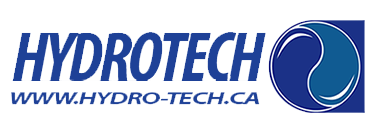6 Considerations When Painting Industrial Machinery

Painting always comes with challenges, but industrial painting is even harder and more important to get right. From preparing the surface properly to using the right kind of paint and letting it dry properly, there are several things to consider when painting industrial machinery. Here are six tips to help you out.
Preparing the Surface
The most important thing you can do no matter what you are painting is to prepare the surface properly. Paint needs a smooth, consistent surface to stick to, so anything else can compromise the quality of your paint job. As a matter of fact, it often takes longer to prepare a surface for painting than it does to actually paint it.
First off, you need to remove all the old paint from the surface you’re going to paint. New paint won’t adhere properly to this old paint, and you don’t want several layers building up. Sandblasting, solvents and even dry ice can be used to strip the paint from a surface and make sure it’s ready to be painted.
Using a primer is also an important part of preparing a surface to be painted. Primers help coatings bind to the surface, giving you a better coat that’s easier to apply.
1. Choosing the Right Coating
Another critical part of painting industrial machinery is choosing the right coating for the job. Different paints and coatings excel at different things, so it’s important to do some research to find a coating that’s suitable for the machinery you’re painting. You can make this determination based on the size and complexity of the surface you’re painting, among other things. Here are some of the most popular coatings:
- Spray coating: This coating is applied via a spray gun or cartridge, applying a thin layer of droplets.
- Powder coating: Electrostatic charge helps a layer of powder adhere to the surface.
- Dip coating: Parts are dipped into a coating to completely cover hard-to-reach areas.
- Brush coating: Paint is applied via a brush, as is the case with standard residential painting.
- Roll-to-roll coating: A film of coating is applied, covering the entire surface in one layer.
2. Drying
Drying industrial machinery is another important part of the painting process. While some people might not think about it, industrial coatings are designed to be dried and cured at a certain temperature for a certain amount of time. This ensures the coating adheres to the surface and doesn’t become warped or distorted. Make sure you follow any instructions a coating manufacturer provides about how to dry and cure the coating.
3. Inspection
Once industrial machinery has been painted, it’s time to get a fresh set of eyes on the job for an inspection. Inspecting a job is the best way to tell if there were any small mistakes, such as bubbles in the paint. While these problems don’t typically need to be fixed, it’s important to inspect each job to make sure there won’t be any problems in the near future.
If a coating sticks too poorly to industrial machinery, you may need to repaint the surface. This is why it’s so important to follow all the rules when you’re painting industrial machinery.
4. Troubleshooting
As far as painting goes, there are a few problems you’re likely to run into. Understanding these problems and how to spot, prevent and fix them is important.
Blisters and bubbles are common in paint, and can be caused by too much moisture or not letting the primer dry properly.
Chipping is often the result of failing to seal primer before applying a topcoat, or simply being a little too rough on machinery.
Cracking paint means there was a problem with the temperature of the surface or a crack in the surface before you painted.
Craters are caused by surface contamination, such as greases, oils, and waxes, that don’t allow the paint to stick in that spot.
Some other issues include delamination, dissolution, and crawling paint, to name a few. Make sure you know about these problems if you’re going to repaint industrial machinery.
5. Preventing pollution
Keep in mind that painting can impact the environment significantly. Doing what you can to reduced pollution and lessen your impact on the environment is important when painting industrial machinery. If you’re hiring somebody to paint industrial machinery for you, make sure you ask about the coatings used and any environmentally friendly practices.
Contact the Pros at Hydro Tech Today
It’s not easy keeping industrial machinery in good condition, but knowing a thing or two about industrial painting helps. Even better, Hydro Tech can help you get the best paint job for your industrial machinery. If you have industrial machinery that could use a fresh coat of paint, contact the pros at Hydro Tech today to learn more.
Categorised in: Industrial Painting
This post was written by admin


